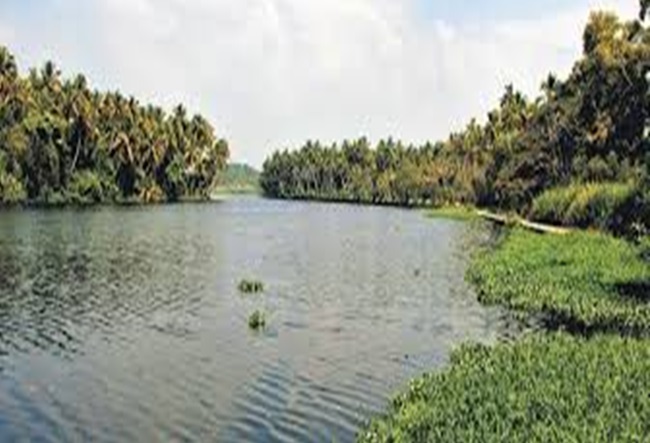Velli-Akkulam Lake has suffered significant ecological degradation due to invasive species, according to a new study by researchers from the University of Kerala.

About Velli-Akkulam Lake
- Velli-Akkulam Lake is located on the south-western coast of Kerala, separated from the Arabian Sea by a sand bar on its western shore and connected to the sea only during the monsoon.
- Velli-Akkulam has two parts, separated by a dam. The western part of the lake faces the sea, forming Velli Lake, while the north-eastern part is called Akkulam Lake.
Key findings of the study
- The research used the Ecopath model to assess ecological efficiency and food web structure, highlighting dramatic changes in the trophic status and food web of the lake over the past three decades.
- The study found a decline in indigenous aquatic species and an increase in invasive species in the Velli-Akkulam lake.
- The ecosystem mapped for the first time in the 1990s by researchers from the University of Kerala showed abundance of native species such as shrimp, native cichlids, barbs and catfish.
- However, the current study has also raised concerns about the decline in biomass of species such as shrimp and cichlids.
- For instance, the biomass of shrimp has declined from 57.60 tonnes per sq km to just 0.110 tonnes/sq km, while that of native cichlids has declined from 41.6 tonnes per sq km to 0.350 tonnes.
- An earlier study had also highlighted the degradation of the Akkulam-Velli lake ecosystem due to pollution in the Ammaizhanjan canal.
Invasive species
- According to studies, by the 2000s, the native species had been replaced by exotic and invasive species such as Mozambique tilapia (Oreochromis mossambicus), Nile tilapia (Oreochromis niloticus), etc.
- Other invasive species that have further complicated the ecosystem include the Amazon African catfish (Clarias gariepinus) and the Amazon sailfin catfish (Perigoplichthys pardalis).



